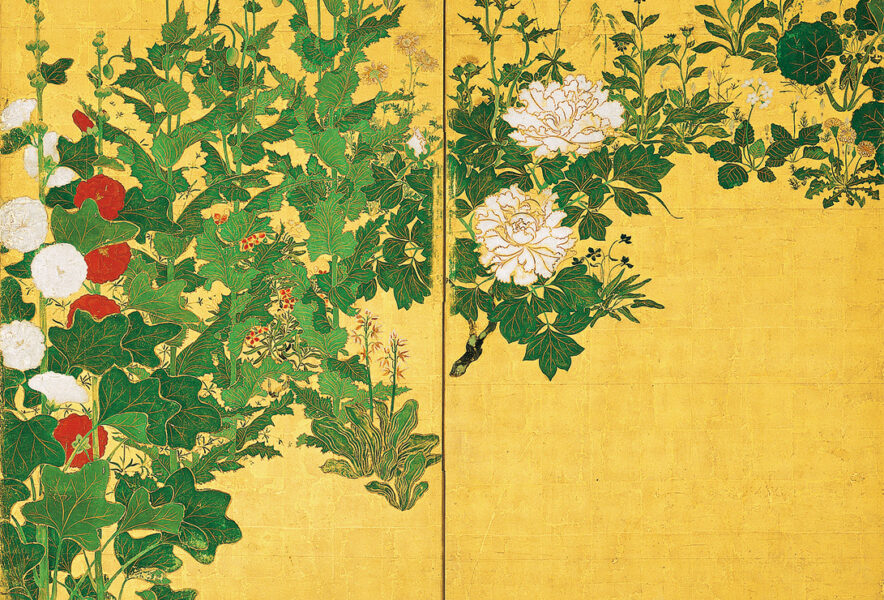Exhibition Overview
The Heian-period Kokin Wakashū (古今和歌集) Poetry Anthology (compiled in 905) contains far more poems related to spring and autumn than to summer and winter. As that difference demonstrates, spring and autumn have long been favorite seasons in Japan. This bias in favor of spring and autumn can also be seen in art, notably in the number of works that depict cherry blossoms and autumn foliage in those seasons.
While this tradition was carried on, in Edo-period art, the combination of summer and autumn, instead of spring and autumn, is also striking. That change doubtlessly reflects a fondness for the charms of summer. Depicting vigorous summer and waning autumn as a sequence, and thus being able to define clearly the change in the seasons, also contributed to that shift in seasonal pairings.
The highlights of this exhibition are masterpieces by Suzuki Kiitsu (鈴木其一), the Edo Rimpa (琳派) School prodigy, and the studio of the Rimpa School founder Tawaraya Sōtatsu (俵屋宗達). Through this exhibition, we hope you will enjoy the shifting moods of the seasons, from early summer to late fall, while exploring various aspects of the aesthetic sensibilities they express.
Term: 14 September (Sat.) – 20 October (Sun.) 2024
Open: 10 am – 5 pm (Last entry 4:30 pm)
Closed: Closed on Mondays, except September 16, 23, and October 14 (closed on the following Tuesdays)
*If you have not purchased a date and timed-entry admission ticket, you may not be able to enter the museum when the galleries are too crowded.
Nezu Museum official website: https://www.nezu-muse.or.jp/
Gallery
Flowers of Summer and Autumn, Inen seal
Sumi (墨) ink is used extensively in these depictions of summer and autumn plants, connected by mist and the ground to convey a gentle rhythm. The golden-rayed and trumpet lilies, blooming in profusion in the summer scene, have not been seen in earlier works and generate a sense of freshness. This work appears to be associated with Kitagawa Sōsetsu (喜多川相説) (n.d.), the second-generation successor to Tawaraya Sōtatsu.
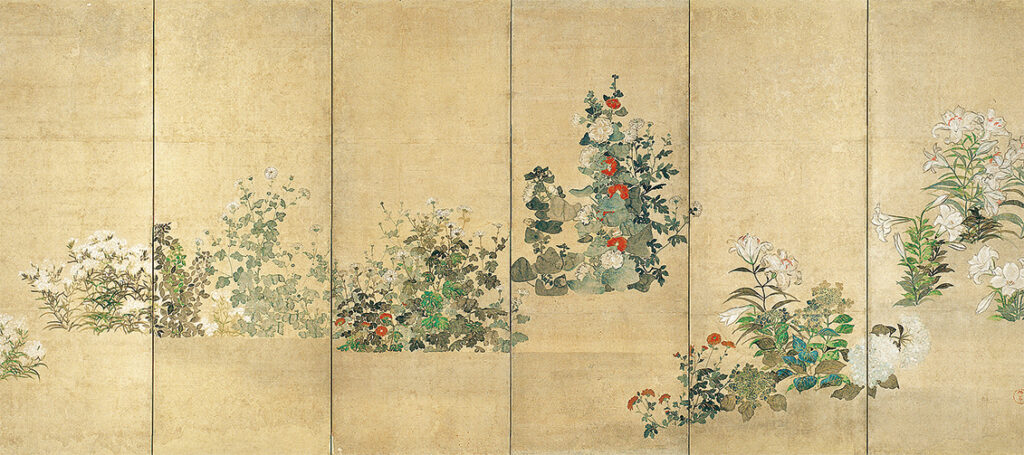
Flowers of Summer and Autumn, Inen seal, Pair of six-panel screens (right); ink and color on paper, Japan Edo period, 17th century
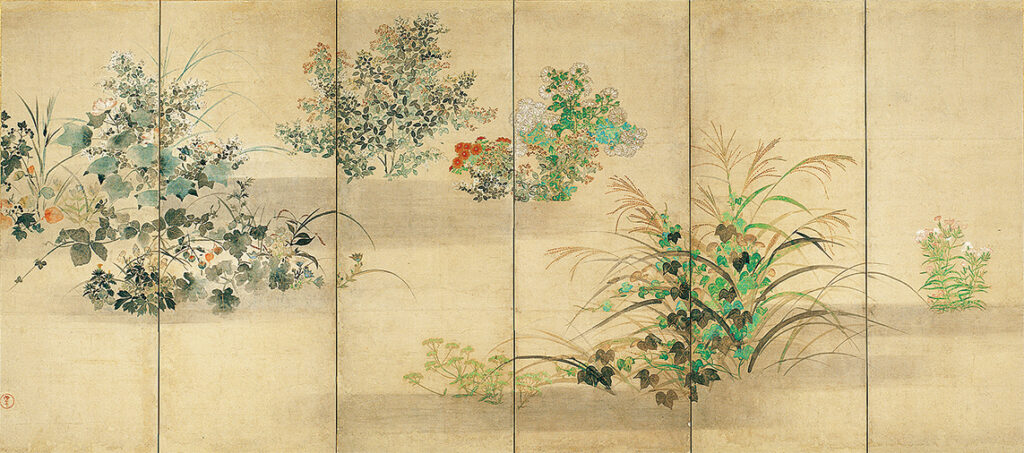
Flowers of Summer and Autumn, Inen seal, Pair of six-panel screens (left); ink and color on paper, Japan Edo period, 17th century
Mountain Streams in Summer and Autumn
A stream flows through a hinoki, Japanese cypress, forest. The right-hand screen presents summer, with white golden-rayed lilies; cherry leaves turning red signal autumn on the left-hand screen. From right to left, the green ground has a delicate quality, with subtle differences in its shades. Other eccentric touches include the rather viscous rendering of the stream and, in the right-hand screen, the cicadas facing sideways and clinging to the cypress trees. These folding screens are the signature work of Suzuki Kiitsu (1796-1858).

Important Cultural Property Mountain Streams in Summer and Autumn By Suzuki Kiitsu, Pair of six-panel screens (right); ink and color on gold-foiled paper, Japan Edo period, 19th century
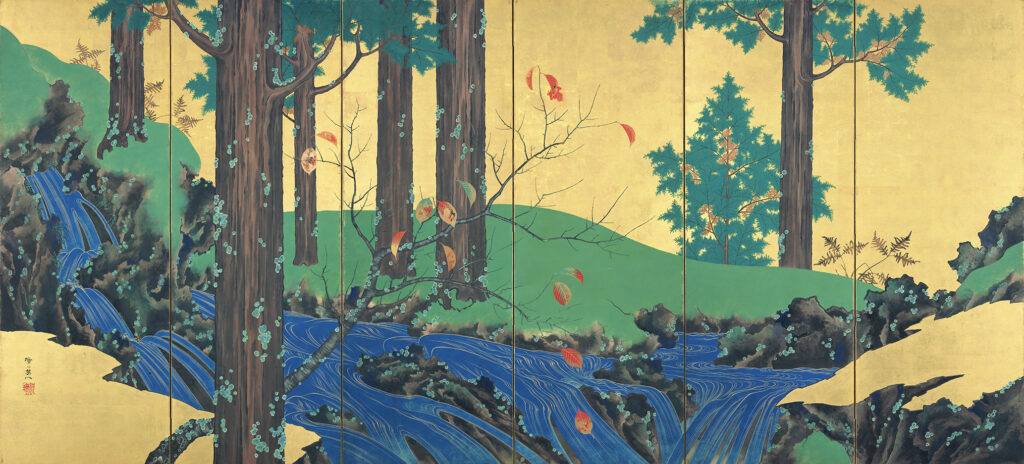
Important Cultural Property Mountain Streams in Summer and Autumn By Suzuki Kiitsu, Pair of six-panel screens (left); ink and color on gold-foiled paper, Japan Edo period, 19th century
Summer Flowers

Summer Flowers By Ogata Kōrin, Pair of two-panel screens; ink and color on gold-foiled papers Japan Edo period, 18th century
Boating and Autumn Foliage Viewing

Boating and Autumn Foliage Viewing By Sumiyoshi Hirosada, Two hanging scrolls (right); ink and color on silk Japan Edo period, 19th century
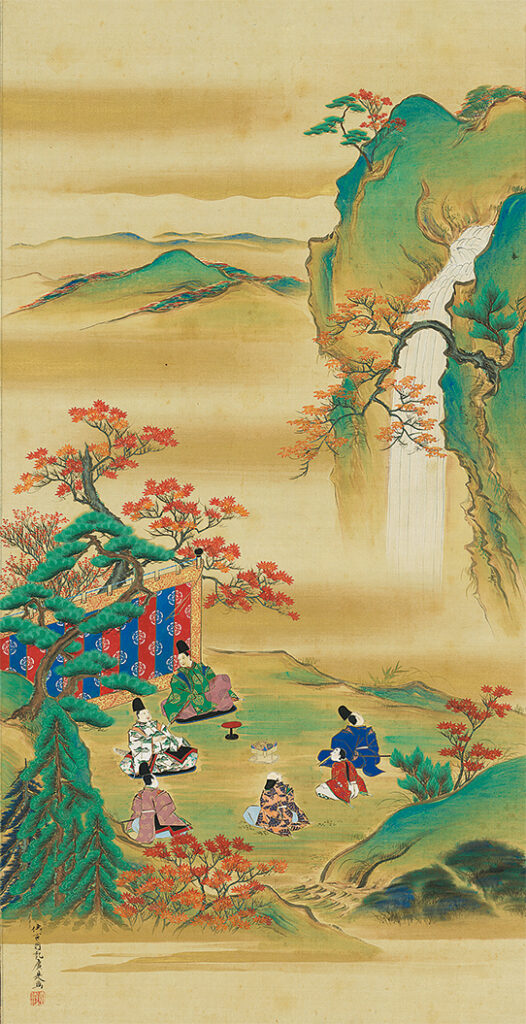
Boating and Autumn Foliage Viewing By Sumiyoshi Hirosada, Two hanging scrolls (left); ink and color on silk Japan Edo period, 19th century
*All works shown here are from the Nezu Museum collection.
*Top image is Summer Flowers By Ogata Kōrin, Pair of two-panel screens (right); ink and color on gold-foiled paper Japan Edo period, 18th century.
Term: 14 September (Sat.) – 20 October (Sun.) 2024
Open: 10 am – 5 pm (Last entry 4:30 pm)
Closed: Closed on Mondays, except September 16, 23, and October 14 (closed on the following Tuesdays)
*If you have not purchased a date and timed-entry admission ticket, you may not be able to enter the museum when the galleries are too crowded.
Nezu Museum official website: https://www.nezu-muse.or.jp/

